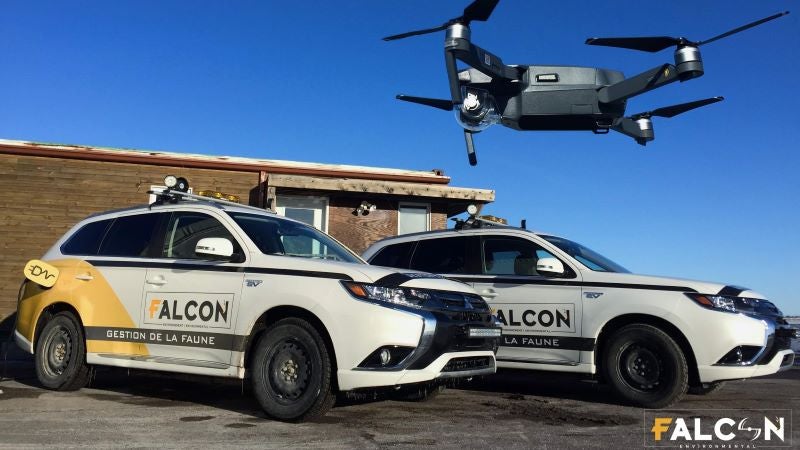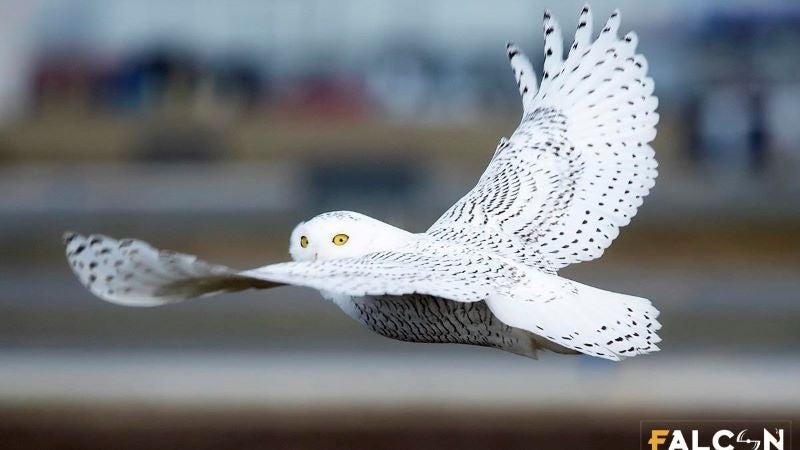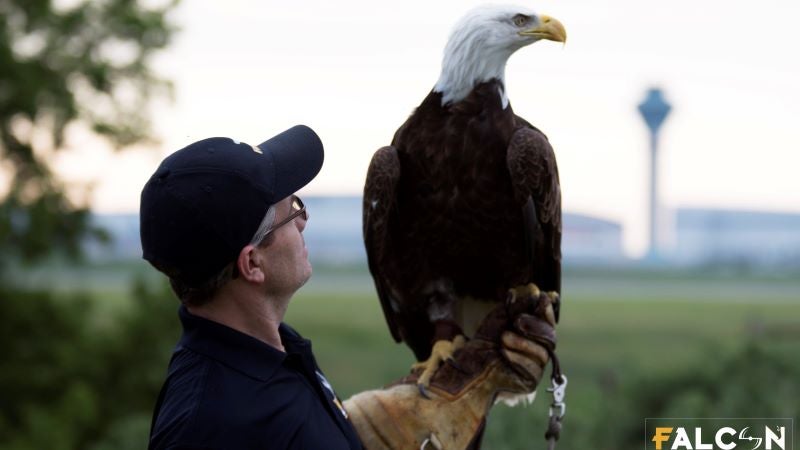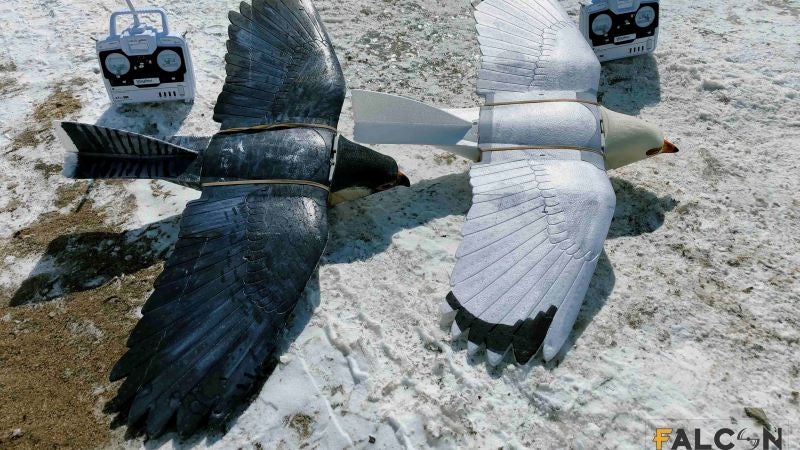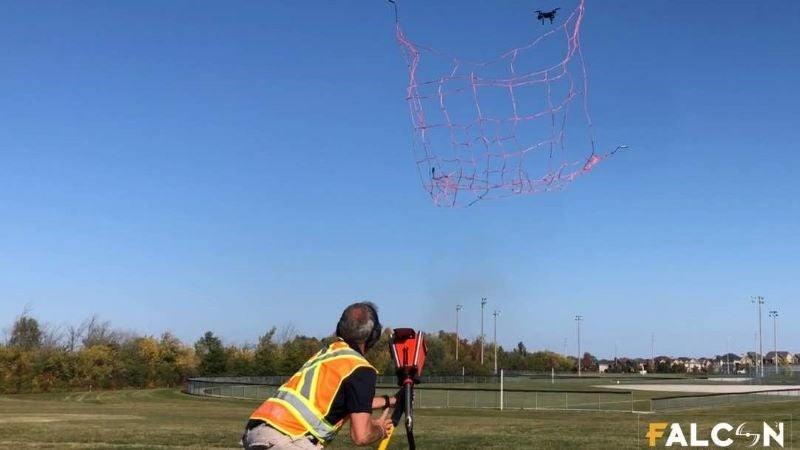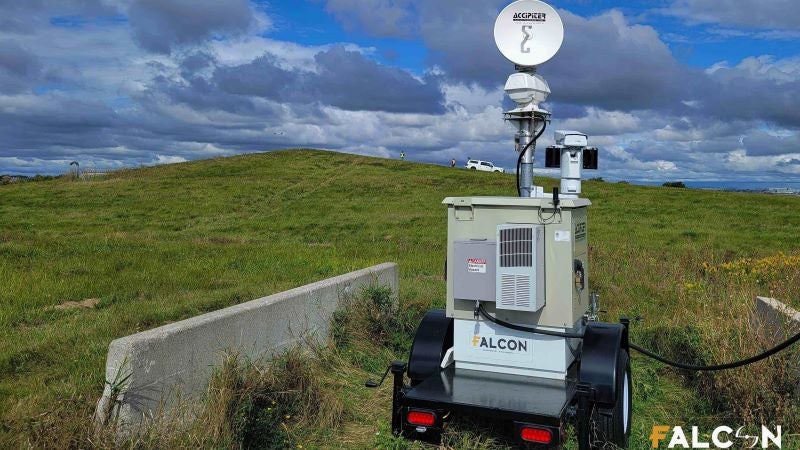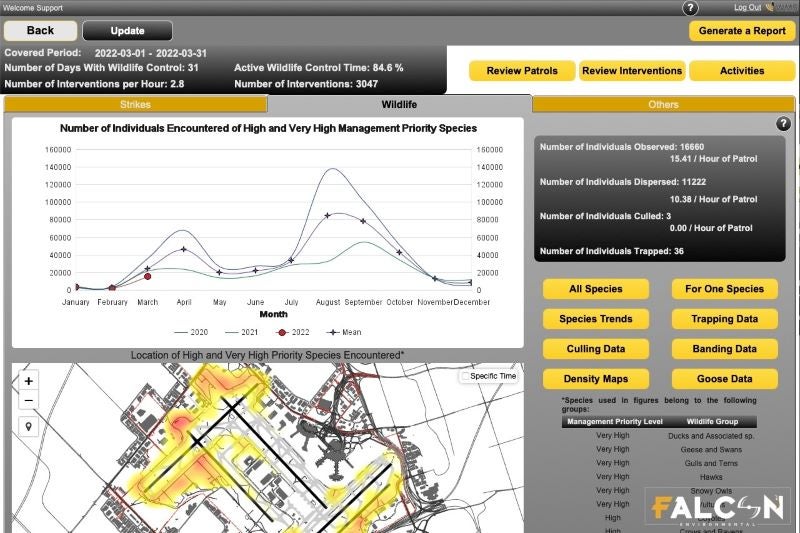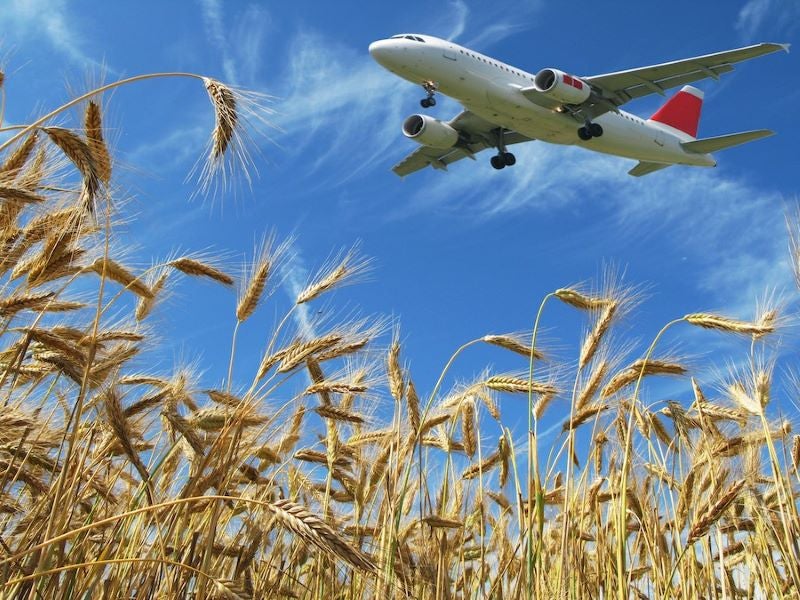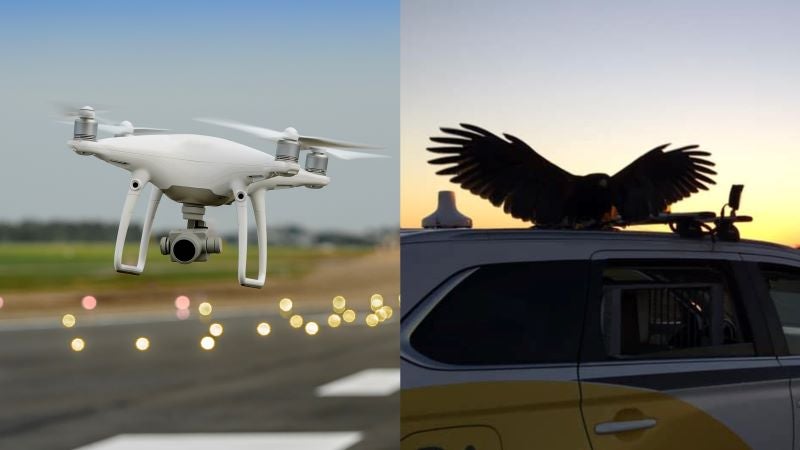
Falcon Environmental Inc. (FALCON) is a leader in wildlife and drone management, serving airports, landfills, and various other environments. Since 1989, we have earned the trust of our long-term clients with unparalleled service backed by a highly skilled and experienced team of professionals.
Throughout its existence, FALCON has striven to mitigate issues of cohabitation between humans and wildlife by offering efficient, cutting-edge tools and strategies with measurable results. More recently, the growing threat of drone incursions has pushed us to leverage our experience in airports and develop innovative, safety-based approaches and technological solutions. Our unique expertise enables our clients to meet, and often exceed, aviation laws and regulations.
Our team of expert biologists, technicians, and drone pilots endeavour to provide integrated solutions to minimise wildlife and drone strike risks with aircraft. FALCON offers its clientele a range of turnkey services including consultation on wildlife risk assessments, Safety Management Systems (SMS) and wildlife management plans, integrated wildlife management programs, avian radar, airport management training, wildlife management reporting software, drone services and control, and more. FALCON currently has operations based in Canada, the United States, and Central America.
Airport Wildlife Management Training
FALCON’s two decades of training experience have helped us build an innovative program adaptable to large and small civilian and military airports, and both field officers and airport managers. The training is available in person or online. To date, we have trained more than 700 airport employees, from over 100 airports, across five countries. FALCON’s Airport Wildlife Management Training is also recognised by the ICAO Trainair Plus Programme.
Wildlife Hazard Management Programs and Risk Assessments
In 2005, FALCON was commissioned to conceive and implement one of the first Wildlife Hazard Management Programs (WHMP), also known as Airport Wildlife Management Plan (AWMP), for a Canadian international airport. Five years later, we carried out one of the most extensive WHMPs in North America for the Royal Canadian Air Force. Today, FALCON has produced more than 70 AWMPs, for more than 50 airports in three countries, including government and privately-owned aerodromes (by international standards; ICAO Annex 14). Our plans incorporate the latest best practices and wildlife management tools, including our open source SMS-based risk analysis software that available for free on our website.
Wildlife Management in Airports
Each airport has a unique environment. The chosen strategies must match its specific wildlife threats and abatement needs. FALCON’s control methods, and their assigned protocols, have been rigorously tested for effectiveness and vetted through an SMS process. This high level of scrutiny ensures that we address all mandates entrusted to us with optimal results, while maintaining safe operating environments for airport customers, personnel, and our own staff.
Program Reviews and Audits
FALCON’s program reviews and audits meet ICAO Airport Certification (Doc 9774, 2001) and address the implementation of wildlife management requirements for commercial airfields. Over time, FALCON has provided its services to public, private, and military airports and its program review and audit services have been used throughout Canada, the United States, and more.
Drone Control and Drone Services
The capacity for drones, or Unmanned Aerial Vehicles (UAVs), to reach areas normally inaccessible to the public is forcing the aviation industry to transform and adapt. FALCON’s drone detection and mitigation services have grown in recent years to include rapid response protocols and tools against drone incursions, as well as drone-to-drone deterrence and neutralisation.
In addition to drone control, FALCON uses its fleet of UAVs to offer a variety of services, such as wildlife detection, mapping, and characterisation of physical environments. We also offer wildlife control services using our fixed-wing drones that can mimic the behaviour of natural predators, and which have been validated for use in Canadian airports.
Technological Hazard Detection
We strive to push the limits of hazard monitoring capabilities. FALCON, with its partners, tests and exploits various detection methods such as avian radar, Aeroscope, triangulation using multiple radio frequency systems, cooperative drone identification systems, target information systems, and radar-guided visual confirmation with specialised cameras. Multi-sensor integration and constant fine-tuning to the needs of a specific airport provide FALCON’s clients with unprecedented awareness of their airfields.
Software Programs
FALCON’s Wildlife Management System (WMS) is used in multiple airports worldwide. This software allows the user to efficiently record, organise, and report wildlife control activities in real-time using a tablet (iPad), or computer (Apple and PC).
This real-time feature and its Cloud database platform allow WMS to produce instant alerts and automate the reporting process with customised formats and frequencies. It offers various options for data interpretation and visualisation of monthly Key Performance Indicators (KPIs) through diagrams, graphs, and statistics, and can determine “hot-spots” or zones that are more at risk for wildlife strikes. The software’s programmable automation streamlines reporting, saving time and chance for error when transferring data.


